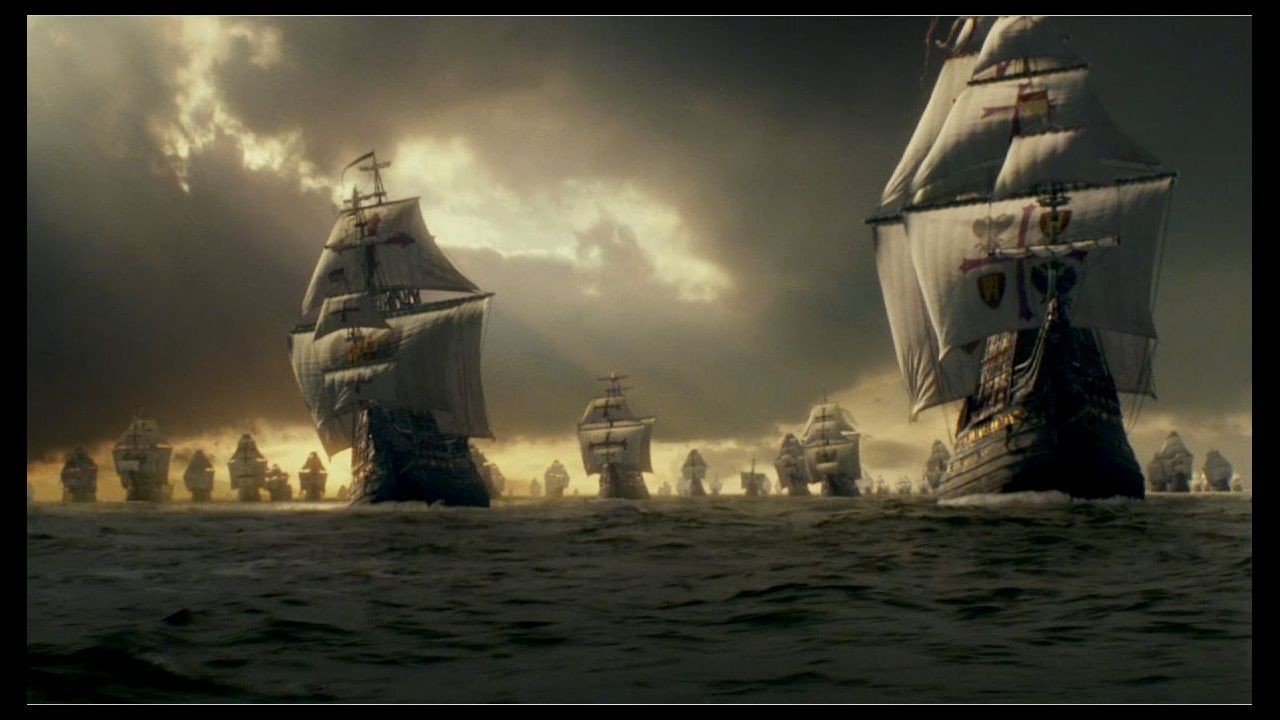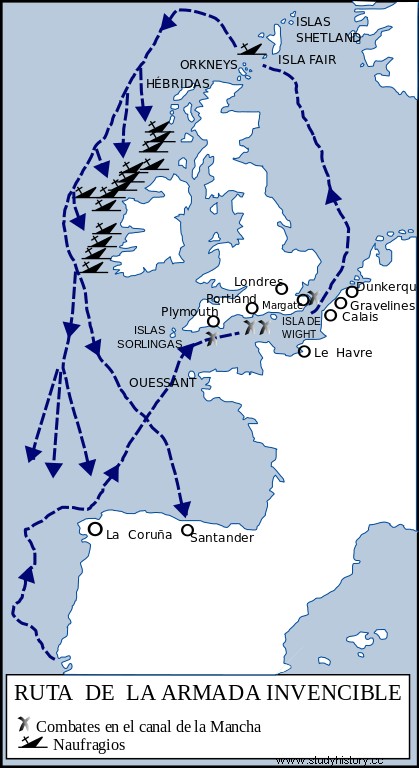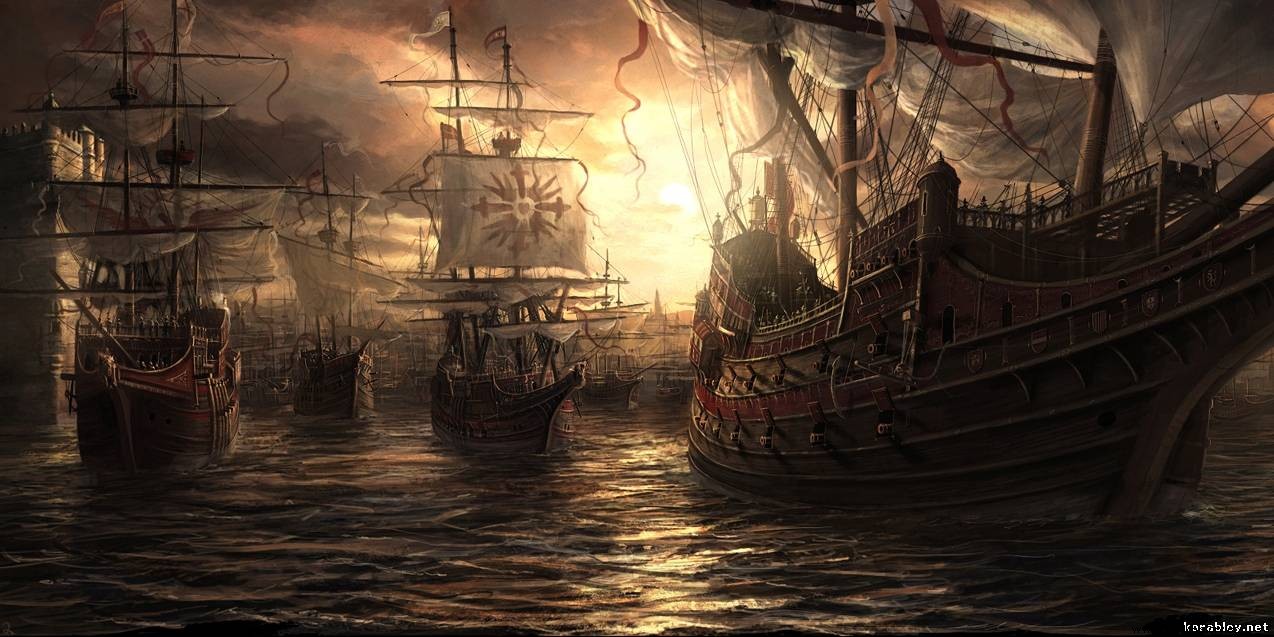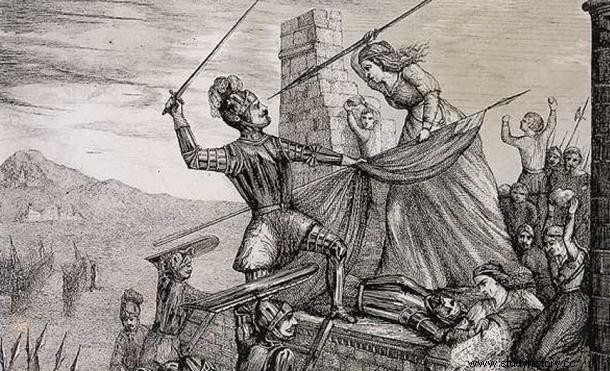The Invincible Armada (also Grande y Felicísima Armada or Gran Armada) is the term usually used to designate a naval fleet that in 1588, and within the so-called Anglo-Spanish War of 1585-1604, was sent by King Philip II of Spain for the invasion of England, then ruled by Elizabeth I, with the aim of overthrowing her, restoring Catholicism on the island, preventing England from aiding the independence of the Netherlands (then under Spanish rule) and quell English pirate attacks on Spanish maritime expeditions and their colonies.

To know all the details of that episode, you can consult them in Armada Invincible. The truth is that this "company" has always been surrounded by many mysteries and legends.
Felipe II's reasons for the invasion of England:
- England was lending aid to the rebels in Flanders.
- English pirates attacked Spanish ships.
- The religious fanaticism of Philip II for imposing Catholicism on the English.
The first setback was the death of Don Álvaro de Bazán, Marquis of Santa Cruz, who was in charge of the “company”. To replace him, Felipe II chose Don Alonso Pérez de Guzmán, Duke of Medina Sidonia. Although he was not a prestigious sailor, like the Marquis of Santa Cruz, he contributed many economic resources and had influence on the Atlantic coast, from where the fleet would depart. It was even said that the duke got seasick on ships and that he asked the monarch not to command the fleet. Even so, Don Alonso was accompanied as a naval adviser by the marine expert Diego Flores de Valdés, and command of the operation would pass into the hands of Alejandro Farnesio, Duke of Parma, when they arrived in Flanders.
Pope Sixtus V promised funding, which never came, and the French their support for the Catholics when they invaded England (we don't know if they would have delivered).
The Navy was never created to confront the English ships at sea, but its mission was to transport the troops to Flanders to meet with the Duke of Parma and embark the Tercios, the true spearhead of the invasion. The Spanish fleet was composed, for the most part, of large galleons and armed merchantmen. The Spanish ships, as well as their artillery, were large, slow, and difficult to maneuver. For its part, the English fleet was light and fast, better suited to the difficult waters of the English Channel. So the English fleet, commanded by Admiral Charles Howard and privateer Francis Drake, had no trouble dispersing the large fleet and attacking a smaller number of units. They fired faster than the Spanish and never let the floating masses get close to their fast boats. Without being significant losses, the Navy could not reach Flanders and embark the Tercios, so the one from Medina Sidonia decided to return to Spanish lands. Of the 130 ships that left, there were still 116 left.

These events were followed by great difficulties for the Great Navy to call at the Flemish ports and a sudden worsening of the weather conditions in the area, which led the English fleet to call at their ports hoping that the weather would improve. The Spanish fleet in the North Sea, due to the winds, had to go around the British Isles through Scotland and then descend around Ireland to go to the Spanish ports, with the subsequent disasters and sinkings in the steep and stormy British coasts that caused a large number of casualties among the Spanish. In the battle with the English, some 1,500 men died and some 18,000 during the journey back home -a little more than 10,000 of the total of almost 30,000 that left Lisbon and two thirds of the ships that started the company- returned.
And if one sentence can summarize the reality of what happened, it is the one pronounced by Felipe II:
I sent my ships to fight against men, not against the elements.

I would add that English propaganda has always been better than ours, because less than a year later, in May 1589, they suffered a greater disaster than that of the Great Army, which, yes, they conveniently managed to silence. A "patriotic" pact between Francis Drake, the admiral of the fleet, and John Norris, as general of the landing troops, kept this story hidden for 450 years. It was the disaster of the so-called «Invincible English or Counterarmada «, the gigantic army -bigger than the Invincible- that Queen Elizabeth of England sent to Spain after Philip II's failure to invade England.
Of the 27,667 men who made up the English fleet of 180 ships, only 3,722 returned to claim their pay
The plan, broadly speaking, consisted of attacking the Spanish galleons anchored for repair in Santander, looting the city, then heading towards Lisbon, provoking an uprising against Spain, seizing an island in the Azores to await the arrival of ships loaded with gold from America and later invade Brazil.
On April 28, 1589, 180 ships and 27,667 men set sail from Plymouth for Santander. But the English knew that the Castilian port was not so weak and Drake made an intermediate decision:he would attack the unguarded A Coruña, with a medieval wall, a castle on the islet of San Antón and with just 500 soldiers. The English anchored in front of the city. On May 5, 1,500 soldiers took La Marina beach, attacking the defenders from behind. The besieged withdrew behind the old walls of the upper part and the invaders began to dig a tunnel with the intention of blowing up the wall. The military governor, the Marquis of Cerralbo, then ordered the women to reinforce the mined section. There was a tremendous explosion, but the gases found no outlet and sought escape through the entrance mouth, where the English troops were. The massacre was absolute, more than 300 dead. But there were no men left for defense. The women then climbed the walls and threw stones that shattered the skulls of the soldiers.
There were hardly any men left alive in this coastal town of 4,000 inhabitants. So María Mayor Fernández de la Cámara y Pita grabbed the weapon of a soldier killed in combat and desperately threw herself against the only English lieutenant who had managed to get past the walls of A Coruña. She went through it and plunged his body next to the ladder by which she had ascended, shouting "Whoever has honor, let him follow me".

María Pita, the heroine in the defense of A Coruña
The fight was to the death. The English fleet decided to withdraw, but re-embarking could be deadly. At the O Burgo bridge, about three kilometers from A Coruña, the Spanish killed the English who tried to cross it, until the best of Queen Elizabeth's army made the Spanish defenders flee to the mountains and villages. The English had lost more than 1,500 men and counted thousands of wounded.
Returning to their ships, they headed for Lisbon, where some 5,000 Spanish soldiers awaited them. On May 31, they staged a major encamisada—a nighttime commando action that caused hundreds of British casualties—and on June 3, the Viceroy of Portugal crushed Colonel Brett's regiment, who was killed in battle. The next day Norris attempted to flee, but was discovered and lost two flags. Later, the advance guard of Castile, Martín Padilla, with galleys and fire ships —incendiary ships— finished off Drake's fleet at Cape Espichel, where he sank between five and seven ships. Norris, on his return, was about to come to blows with Drake and launched an appeal to patriotism:the mission would be hidden forever.
